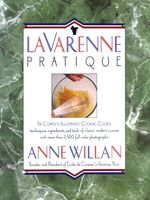Label
All
0
Clear all filters
Exotic Game Birds
Appears in
By Anne Willan
Published 1989
Throughout history, exotic birds have captured the cook’s imagination. Menus of medieval banquets in Europe list many birds that are now protected by law. The star dish was often a peacock, or swan, in its plumage, brought on in procession by a lady of outstanding beauty and high rank. To achieve this sensational presentation, the cook stripped off the feathers and skin together, cooked the edible part, and then put the bird together again with wire supports for a life-like effect.
Songbirds, such as larks, thrushes and warblers, are still gourmet items on the southern European table, particularly in Italy, Spain and the south of France. The garden bunting (ortolan) is a particular prize, once netted in thousands, but now increasingly rare. Such small birds are usually barded with fat and vine leaves and roasted, often with their innards to add flavor. They should “fly through the oven” so that the meat remains rare, or they may be roasted on a spit. The head, with beak, is presented to the diner. Small birds can be boned and stuffed, luxuriously, with foie gras and truffles, or combined with forcemeat in a terrine. Lark pâtés were once the speciality of Pithiviers and Chartres, towns in the vast, wheat-growing plain west of Paris. Now that larks are protected by law, ducks are often used instead.
Become a Premium Member to access this page
Unlimited, ad-free access to hundreds of the world’s best cookbooks
Over 160,000 recipes with thousands more added every month
Recommended by leading chefs and food writers
Powerful search filters to match your tastes
Create collections and add reviews or private notes to any recipe
Swipe to browse each cookbook from cover-to-cover
Manage your subscription via the My Membership page
Best value
Part of
Advertisement
Advertisement
The licensor does not allow printing of this title


